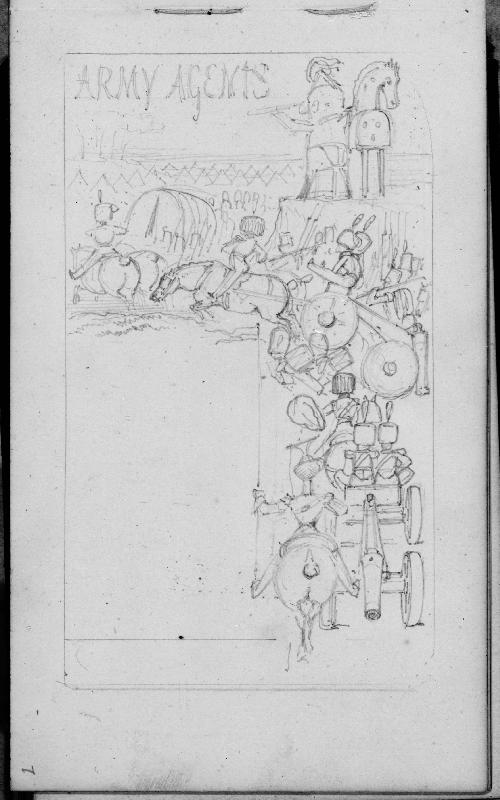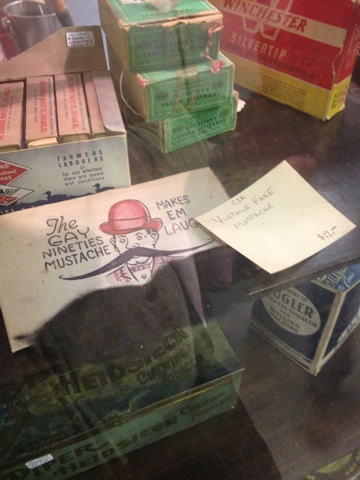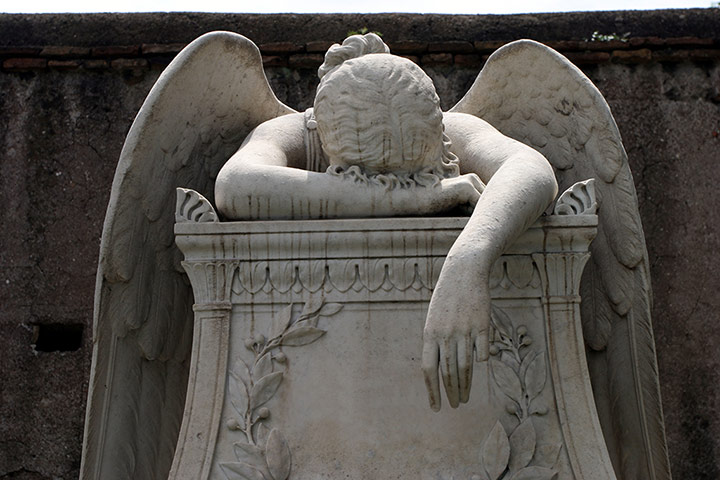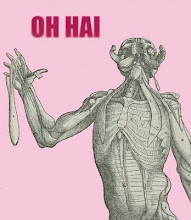The story, written by Abu Bakr ibn 'Abd al-Malik ibn Tufayl, begins with Hayy ibn Yaqzan. He was abandoned on an island and was essentially raised by a doe. He had to learn about the world through observation. When his doe-mother died, he sought to find out how to make her live again. It did not work, but he learned about the body:
§ 16
Notwithstanding this she grew lean and weak, and continued a while in a languishing condition, till at last she dyed, and then all her motions and actions ceased. When the boy perceived her in this condition, he was ready to dye for grief. He called her with the same voice which she used to answer to, and made what noise he could, but there was no motion, no alteration. Then he began to peep into her ears and eyes, but could perceive no visible defect in either; in like manner he examined all the parts of her Body, and found nothing amiss, but every thing as it should be. He had a vehement desire to find that part where the defect was, that he might remove it, and she return to her former state. But he was altogether at a loss how to compass his design, nor could he possibly bring it about.
§ 17
That which put him upon this search, was what he had observed in himself. He had noticed that when he shut his eyes, or held anything before them, he could see nothing at all, till that obstacle was removed; and so when he put his fingers into his ears, that he could not hear, till he took them out again; and when he closed his nostrils together, he smelt nothing till they were opened; from whence he concluded that all his perceptive and active faculties were liable to impediments, upon the removal of which, their operations returned to their former course. Therefore, when he had examined every external part of her, and found no visible defect and yet at the same time perceived an universal cessation of motion in the whole body, not peculiar to one member but common to them all, he began to imagine that the hurt was in some organ which was remote from the sight and hidden in the inward part of the body; and that this organ was of such nature and use, that without its help, none of the other external organs could exercise their proper functions; and that if this organ suffer any hurt, the damage was general, and a cessation of the whole ensued.
§ 18
18 This made him very desirous to find that organ if possible, that he might remove the defect from it, that so it might be as it used to be, and the whole body might enjoy the benefit of it, and the functions return to their former course. He had before observed, in the bodies of wild beasts and other animals, that all their members were solid, and that there were only three cavities,
vizthe skull, the breast, and the belly; he imagined therefore that this organ which he wanted must needs be in one of these cavities, and above all, he had a strong persuasion that it was in the middlemost of them. For he verily believed that all the members stood in need of this organ, and that from thence it must necessarily follow that the seat of it must be in the centre. And when he reflected upon his own body, he felt the presence of such an organ in his breast. Now since he was able to hinder the action of all his other organs, such as hands, feet, ears, nose and eyes, and deprive himself of it, he conceived that it might be possible to subsist without them; but when he considered this organ within his breast he could not conceive the possibility of subsisting without it, so much as the twinkling of an eye. And upon this account, whenever he fought with any wild beast, he always took particular care to protect his breast from being pierced by its horns, because of the apprehension which he had of that organ which was contained in it.
§ 19
Having, by this way of reasoning, assured himself that the disaffected organ lay in the breast; he was resolved to make a search in order to examine it, that whatsoever the impediment was, he might remove it if possible; but then again, he was afraid on the other side, lest his undertaking should be worse than the disease, and prove prejudicial. He began to consider next, whether or no he had ever remembered any wild beasts or other animals which he had seen in that condition, recover again, and return to the same state which they were in before, but he could call to mind no such instance; from whence he concluded that if she was let alone there would be no hopes at all, but if he should be so fortunate as to find that organ and remove the impediment, there might be some hope. Upon this he resolved to open her breast and make enquiry; in order to which he provided himself with fragments of flint, and splinters of dry cane almost like knives, with which he made an incision between the ribs, and cutting through the flesh, came to the
diaphragma; which he finding very tough, assured himself that such a covering must needs belong to that organ which he looked for, and that if he could once get through that, he should find it. He met with some difficulty in his work, because his instruments were none of the best, for he had none but such as were made either of flint or cane.
§ 20
However, he sharpened them again and renewed his attempt with all the skill he was master of. At last he broke through, and the first part he met with was the lungs, which he at first sight mistook for that which he searched for, and turned them about this way and that way to see if he could find in them the seat of the disease. He first happened upon that lobe which lay next the side which he had opened and when he perceived that it did lean sideways, he was satisfied that it was not the organ he looked for, because he was fully persuaded that that must needs be in the midst of the body, as well in regard of latitude as longitude. He proceeded in his search, till at last he found the heart, which when he saw closed with a very strong cover, and fastened with stout ligaments, and covered by the lungs on that side which he had opened, he began to say to himself: "If this organ be so on the other side as it is on this which I have opened, then it is certainly in the midst, and without doubt the same I look for; especially considering the convenience of the situation, the comeliness and regularity of its figure, the firmness of the flesh, and besides, its being guarded with such a membrane as I have not observed in any other part." Upon this he searches the other side, and finding the same membrane on the inside of the ribs, and the lungs in the same posture which he had observed on that side which he had opened first, he concluded this organ to be the part which he looked for.
§ 21
Therefore he first attacks the
pericardium, which, after a long trial and a great deal of pains, he made shift to tear; and when he had laid the heart bare, and perceived that it was solid on every side, he began to examine it, to see if he could find any apparent hurt in it; but finding none, he squeezed it with his hand, and perceived that it was hollow. He began then to think that what he looked for might possibly be contained in that cavity. When he came to open it, he found in it two cavities, one on the right side, the other on the left. That on the right side was full of clotted blood, that on the left quite empty. "Then (says he) without all doubt, one of those two cavities must needs be the receptacle of what I look for; as for that on this right side there’s nothing in it but congealed blood, which was not so, be sure, till the whole body was in that condition in which it now is" (for he had observed that all blood congeals when it flows from the body). "This blood does not differ in the least from any other; and I find it common to all the organs. What I look for cannot by any means be such a matter as this; for that which I seek is something which is peculiar to this place, which I find I could not subsist without, so much as the twinkling of an eye. And this is that which I looked for at first. As for this blood, how often have I lost a great deal of it in my skirmishes with the wild beasts, and yet it never did me any considerable harm, nor rendered me incapable of performing any action of life, and therefore what I look for is not in this cavity. Now as for the cavity on the left side, I find it is altogether empty, and I have no reason in the world to think that it was made in vain, because I find every organ appointed for such and such particular functions. How then can this ventricle of the heart, which I see is of so excellent a frame, serve for no use at all? I cannot think but that the same thing which I am in search of, once dwelt here, but has now deserted his habitation and left it empty, and that the absence of that thing has occasioned this privation of sense and cessation of motion which happened to the body." Now when he perceived that the being which had inhabited there before had left its house before it fell to ruin, and forsaken it when as yet it continued whole and entire, he concluded that it was highly probable that it would never return to it any more, after its being so cut and mangled.
§ 22
Upon this the whole body seemed to him a very inconsiderable thing, and worth nothing in respect of that being he believed once inhabited, and now had left it. Therefore he applied himself wholly to the consideration of that being. What it was and how it subsisted? What joined it to this body? Whither it went, and by what passage, when it left the body? What was the cause of its departure, whether it were forced to leave its mansion, or left the body of its own accord? And in case it went away voluntarily, what it was that rendered the body so disagreeable to it, as to make it forsake it? And whilst he was perplexed with such variety of thoughts, he laid aside all concern for the carcass, and banished it from his mind; for now he perceived that his mother, which had nursed him so tenderly and had suckled him, was that something which was departed; and from it proceeded all her actions, and not from this inactive body; but that all this body was to it only as an instrument, like his cudgel which he had made for himself, with which he used to fight with the wild beasts. So that now, all his regard to the body was removed, and transferred to that by which the body is governed, and by whose power it moves. Nor had he any other desire but to make enquiry after that.
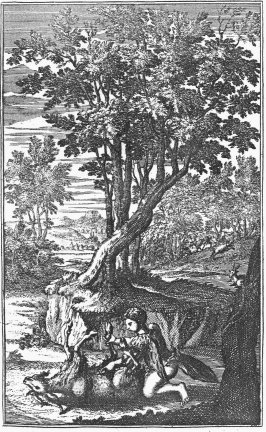
Information mentioned here and other translated text can also be found in Robert Irwin,
Night Horses and the Desert: An Anthology of Classical Arabic Literature (The Penguin Press): 290-298.














